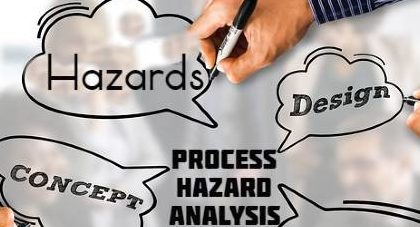14 Elements of Process Safety Management: A Comprehensive Guide to the PSM System

Navigating OSHA’s PSM Standard & The Fundamentals of Process Safety Management
November 8, 2024
Residual Life Assessment for Electrical Equipment & Fire Pump Performance Testing Services
November 16, 2024Introduction
Process Safety Management (PSM) is a critical framework designed to prevent and manage hazardous incidents in industrial operations. PSM helps organizations safeguard employees, communities, and the environment by implementing structured guidelines and ensuring compliance. One of the most pivotal aspects of PSM is its 14 elements of process safety management, which collectively create a comprehensive safety system. This article explores these elements, their significance, and how they are interconnected to form an effective process safety management system.
Main Content: Detailed Exploration of the 14 Elements of PSM
Why is Process Safety Management Essential?
Process Safety Management ensures operational safety by focusing on the identification, evaluation, and mitigation of potential hazards. It minimizes the risk of catastrophic incidents, protects lives, and ensures regulatory compliance. A well-implemented process safety management system helps organizations maintain efficiency while prioritizing safety.
What Are the 14 Elements of Process Safety Management?
The 14 elements of process safety management serve as the foundation of PSM. These interconnected components address every aspect of industrial safety, from employee participation to emergency response. Understanding what are the 14 elements of process safety management is essential for developing a robust system.
List of Elements of Process Safety Management: A Closer Look
Each of the process safety management elements plays a unique role in building a safe working environment. Here’s a breakdown of the list of elements of process safety management:
- Employee Participation
- Encourages active involvement of employees in safety protocols.
- Fosters a culture of shared responsibility within the organization.
- Process Safety Information
- Involves documentation of hazardous chemicals, equipment, and processes.
- Acts as the foundation for conducting hazard analyses.
- Process Hazard Analysis (PHA)
- Identifies potential hazards and evaluates their impact.
- Provides recommendations to mitigate risks effectively.
- Operating Procedures
- Establishes step-by-step instructions for safe operations.
- Ensures consistency and reduces the likelihood of human error.
- Training
- Prepares employees to handle safety challenges effectively.
- Reinforces awareness of process safety management elements.
- Contractors
- Ensures external contractors comply with safety standards.
- Evaluate their performance in adhering to PSM guidelines.
- Pre-Startup Safety Review (PSSR)
- Conducts thorough checks before initiating new or modified processes.
- Verifies that all safety measures are in place.
- Mechanical Integrity
- Focuses on maintaining equipment reliability through regular inspections.
- Reduces the risk of mechanical failures.
- Hot Work Permit
- Governs activities involving open flames or heat sources.
- Prevents ignition of flammable substances.
- Management of Change (MOC)
- Manages changes in processes, equipment, or personnel.
- Ensures changes are evaluated for potential risks.
- Incident Investigation
- Analyzes incidents to identify root causes and prevent recurrence.
- Strengthens the overall process safety management system elements.
- Emergency Planning and Response
- Develops plans to handle emergencies effectively.
- Minimizes damage to people and property during incidents.
- Compliance Audits
- Conducts regular audits to ensure adherence to safety protocols.
- Identifies gaps in the system for improvement.
- Trade Secrets
- Protects sensitive information while ensuring safety and transparency.
- Balances confidentiality with operational safety.
How Are the 14 Elements of Process Safety Management Connected?
The process safety management elements connected form an integrated system that ensures safety at every level. For example, process hazard analysis (PHA) feeds into operating procedures and emergency planning, while employee training enhances the effectiveness of all elements. Understanding these connections is key to implementing a cohesive process safety management system.
How to Implement Process Safety Management System Elements?
To implement process safety management system elements, organizations should:
- Develop detailed safety policies and procedures.
- Train employees on the 14 elements of process safety management.
- Conduct regular hazard analyses and audits.
- Engage contractors in safety programs.
- Monitor and continuously improve the system.
Best Practices and Tips
Best Practices for Effective Process Safety Management
- Encourage open communication about safety concerns.
- Leverage technology for hazard identification and monitoring.
- Regularly update safety procedures to align with evolving regulations.
Challenges in Implementing Process Safety Management Elements
- Resource Allocation: Limited budgets can hinder implementation.
- Employee Resistance: Lack of awareness or training may cause reluctance.
- Complexity: Managing multiple interconnected process safety management elements requires careful planning.
Organizations can overcome these challenges by fostering a safety-focused culture and investing in training and tools.
Conclusion
Understanding and implementing the 14 elements of process safety management is crucial for enhancing industrial safety. Each process safety management element plays a vital role in establishing a comprehensive Process Safety Management system, ensuring a safer and more efficient workplace. Organizations benefit significantly from tools like the Hazop Study to identify potential risks and strengthen their safety protocols.
Additionally, conducting a thorough Fire Audit and Safety Audit helps in evaluating existing safety measures and ensuring regulatory compliance. Engaging an expert Safety Consultant can further assist in adopting best practices, overcoming challenges, and building a resilient safety framework. Organizations can create a workplace environment that prioritizes safety and compliance by leveraging these resources and understanding how the process safety management elements are connected.




